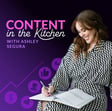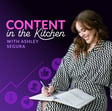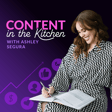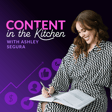
LinkedIn Content: The Do's, Don'ts, and Things to Test
In this episode, Ashley engages with Meredith Farley to discuss LinkedIn content strategies for a broad range of audiences, from executives to lifestyle brands. The conversation begins with the intricacies of creating impactful LinkedIn posts. Then, we chat about a range of topics such as ghostwriting for executives, the nuances of brand storytelling on LinkedIn, and the benefits of consistent engagement on LinkedIn.
Meredith also shares insights on the use of AI in content creation for LinkedIn and offers practical advice for those looking to enhance their LinkedIn presence. Listeners will gain valuable tips on how to optimize their content on LInkedin, strategically engage with their network, and leverage the platform to achieve personal and professional goals.
Subscribe now for your bi-weekly dose of content wisdom, direct from the content marketing experts to your kitchen table.
Website:
https://contentyum.com/
Socials:
https://www.instagram.com/contentyumm/
https://www.linkedin.com/company/contentyum
https://www.tiktok.com/@contentyum
https://www.facebook.com/contentyumm
https://www.youtube.com/@Content-Yum



